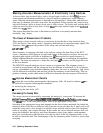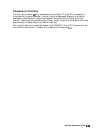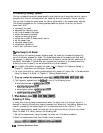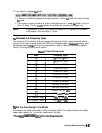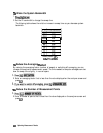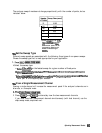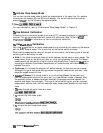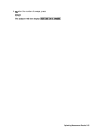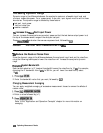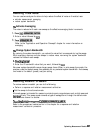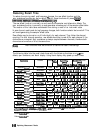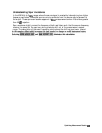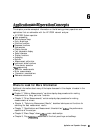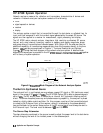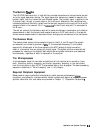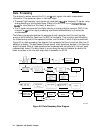
Increasing Dynamic Range
Dynamic range is the difference between the analyzer’s maximum allowable input level and
minimum measurable power. For a measurement to be valid, input signals must be within these
boundaries. The dynamic range is affected by these factors:
m
test port input power
n
test port noise floor
m
receiver crosstalk
To
Increase the
Test
Port Input Power
You can increase the analyzer’s source output power so that the test device output power is at
the top of the measurement range of the analyzer test port.
,,,,,
:,~,,,~,.,.,.;..
,..
.:.:::
Press
LMenu)
@&j$&
and enter the new source power level, followed by
Ixl).
Caution
TEST PORT INPUT DAMAGE LEVEL: + 26
dBm
To
Reduce the Receiver Noise Floor
Since the dynamic range is the difference between the analyzer’s input level and its noise floor,
using the following techniques to lower the noise floor will increase the analyzer’s dynamic
range.
changing
System Bandwidth
Each tenfold reduction in IF (receiver) bandwidth lowers the noise floor by 10
dB.
For example,
changing the IF bandwidth from 3
kHz
to 300 Hz, you will lower the noise floor by about
10
dl3.
2. Enter the bandwidth value that you want, followed by
@).
Changing Measurement Averaging
You can apply weighted averaging of successive measurement traces to remove the effects of
random noise.
2.
Enter a value followed by (x1)
Refer to the “Application and Operation Concepts” chapter for more information on
averaging.
6-66 Optimizing Measurement Results



